How to Start a Podcast with No Audience: A Comprehensive Guide
Updated May 27, 2024
Published July 6, 2023

Podcasts are becoming increasingly popular nowadays. In fact, a recent report by Statista predicts that the number of worldwide podcast listeners will reach 504.9 million by 2024!

Number of podcast listeners worldwide 2019-2024. Source: Statista
If you’re planning to launch your own podcast, the first hurdle you’ll likely need to cross is the lack of an existing audience, and that’s where this guide comes in handy!
Today, in this step-by-step guide we’ll show you how to start a podcast with no audience as well as helpful tips to build a loyal podcast audience with time!
Is It Okay to Start a Podcast Without an Audience?
While having an existing audience can be a massive boost to your podcast, you can still start a podcast with no audience.
As we just mentioned, the market of podcasting is growing by the year, so there are always new listeners looking for a podcast that appeals to their interests.
Additionally, many successful podcasts out there started with little to no audience and managed to make it big by providing stellar and enjoyable content.
With that said, you should keep in mind that starting a successful podcast with no audience requires both hard work and catching opportunities whenever they present themselves.
In other words, while it’s okay to start a podcast with no audience, eventually an audience is still crucial for the success of your podcast.
That’s why you need to implement various methods to market your podcast and gain followers from the get-go, which we’ll discuss in this guide.
A Step-By-Step Guide to Start a Podcast with No Audience
Launching a successful podcast without an existing audience involves a lot of work and dedication to your craft. In this section, we’ll walk you through all the essential steps you need to take to start a podcast with no audience.
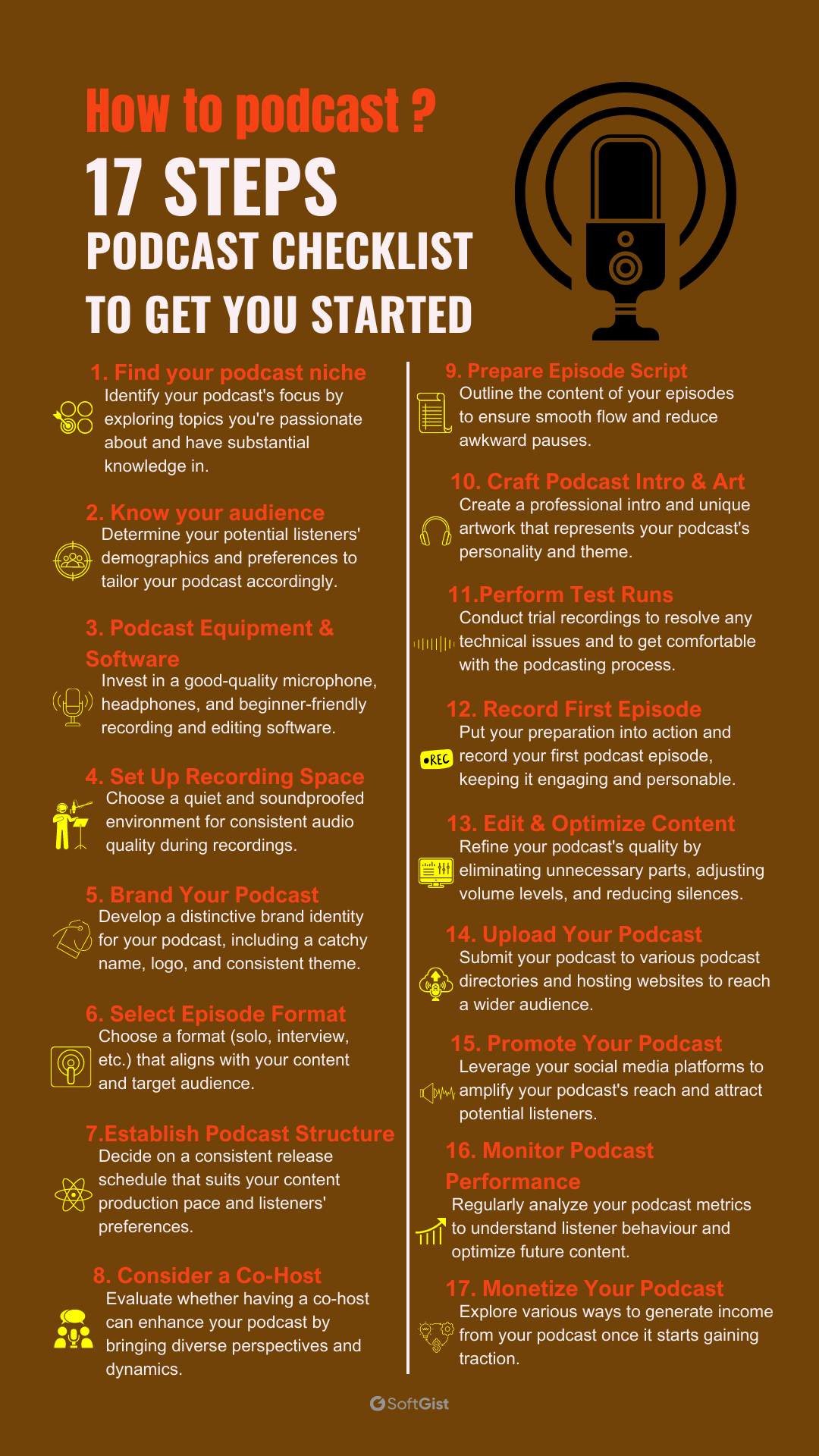
Research Ideas and Topics for Your Podcast
The first thing you need to consider before launching a podcast is what your content is going to be about.
Finding a niche for your podcast is essential not only because it helps you pick ideas and topics for your podcast, but also because it lets you understand who you’re going to talk to.
Make sure that you pick a niche that you’re deeply familiar with. This allows you to resonate with your podcast audience, establish yourself as a thought leader for the topics you’re discussing, and build a loyal listener base as more interested listeners tune in.
While choosing a niche isn’t a walk in the park, here are some helpful tips that you can use to find yours:
- Create a list of fields you have a lot to share about
- Consider topics that you have professional experience in
- Think of your main interests and aspects you’re passionate about
- Listen to other podcasts in your interested niches for inspiration
- Go for topics you can offer helpful advice in (to establish yourself as an authority figure in that niche)
- Favor longevity over trends, and make sure that you’re excited about the niche you pick to transfer this energy to future listeners
Study the Audience You Want to Reach
Identifying your target audience is as critical as picking your niche, as it helps you learn more about their expectations and appeal to them better.
One of the best ways of finding out more about the potential audience is learning more about their demographics and what they have in common, such as:
- Age groups
- Gender
- Education
- Location
- Socioeconomic status
For instance, according to a report by Colormatics, adults aged 18 to 49 make up over 70% of football fans, so it would make sense to make a football podcast appealing to that age group more than others.
One of the best ways to study and build a persona for your average listener is by using market research and market analysis tools, such as Google Trends, Google Analytics, SurveyMonkey, Statista, and more!
Keep in mind that the best way to learn about your potential audience is by trying. That’s why you should be flexible and ready to experiment to find the right formula to gain an audience and resonate with them.
Get the Right Equipment and Software for the Podcast
Now that you have a better idea of your podcast niche and target audience, you should prepare the necessary equipment to launch a podcast.
Since you’re starting from scratch, you don’t need to go all out while buying recording tools and software.
You should go for a dynamic microphone rather than a condenser because they’re excellent for recording vocals while dampening background noise. This helps your audio come out as natural and clear as possible
A good recommendation here would be Rode PodMic or the Blue Yeti Microphone Bundle because they have professional audio quality while coming at a decent price.
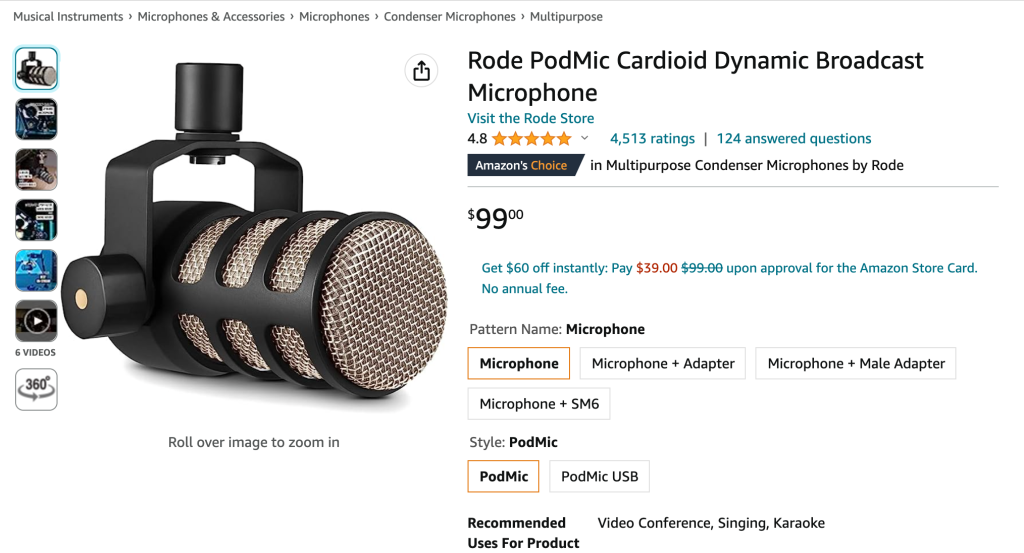
In addition to the microphone, you also need to have a computer and decent-quality headsets to hear and test your audio quality properly.
The computer/laptop is also necessary to install the recording and editing software necessary to create your episodes and upload them online.
Our top recommendations for new podcasters would be Adobe Audition, GarageBand (for Mac), and Audacity because they’re fairly affordable and easy to use for beginner podcasters.
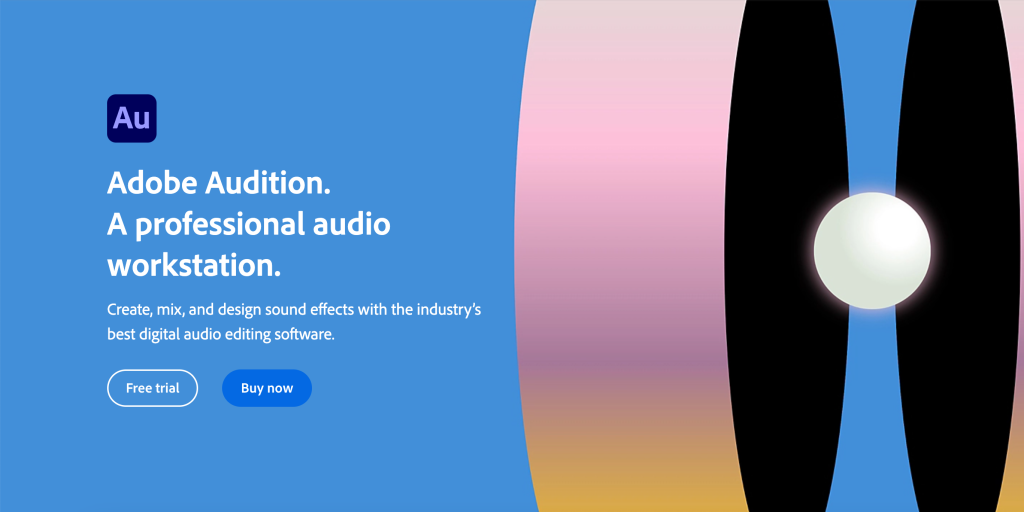
Find a Suitable Setting to Record Your Episodes
Luckily, you don’t need a professional studio to record your podcasts. However, you still need a soundproofed medium to make sure that your audio is crisp and uninterrupted.
You can go with a DIY approach by creating a home studio using acoustic foam panels. Alternatively, you can go for studio rentals if you don’t mind spending some extra cash for a smoother process.
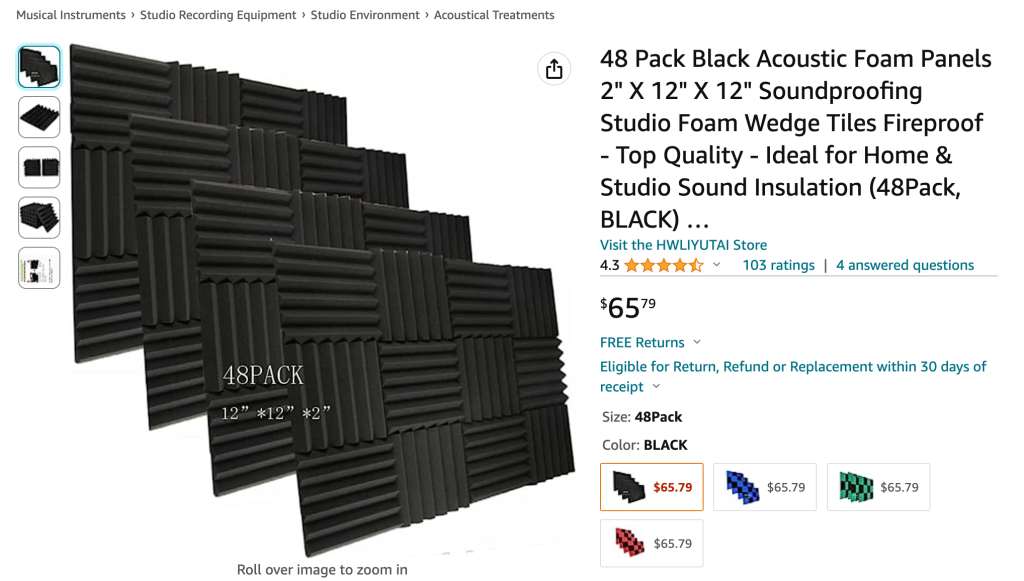
If you’re also videotaping your episodes, you’ll need to take care of extra aspects, such as video recording tools, decorations, props, etc.
Your podcast is more than just a library of audio files. It’s a brand that needs to be memorable, recognizable, and distinct to attract listeners and stand out among the crowd. This doesn’t only include your podcast’s name, but also its slogans, designs, theme, etc.
Take your time while coming up with your podcast’s brand. It can be tied to your personal brand or not, but the key is to keep your podcast name short, memorable, and fairly relevant to your niche.
After the name, you should also create a logo. Make sure that your branding style stays consistent across platforms and matches the tone of your podcast.
After coming up with your podcast’s branding, you need to take care of your online presence. This includes:
- Creating a consistent social media handle on all popular platforms
- Using Linktree to make it easier for everyone to reach your podcast
- Establishing your own podcast website, which is an excellent way to build a strong online presence
Once you already have a set date to release your first podcast episode, you should announce your podcast to all your social media followers.
Choose an Appropriate Episode Format
Podcasts come in tons of formats, even within the same niche. Choosing a format for your podcast is essential for consistency and helps you appeal to an audience looking for that type of content.
The most common formats for a podcast are Solo (sharing your own thoughts and ideas on a certain topic) or Interview (hosting guests on your show to share their experiences, thoughts, etc).
You can also incorporate side formats to your podcast once you start gaining listeners, such as Q&A and Storytelling.
Pick a Consistent Structure (Flow) for the Podcast
Besides the format, you should also set a consistent release date for your podcast episodes, such as once or twice per week.
In fact, this is one of the aspects where quality is much more critical than quantity. Make sure that you take your time while deciding and be open to some changes after gaining listeners depending on their listening trends and optimal release times.
For example, after gaining some audience, if your content mainly appeals to adults of working age, you might need to adjust your release date to be on weekends rather than weekdays.
Consider Having a Co-Host
This one is not mandatory but we highly highly recommend steps for some types of podcasts, especially storytelling and interview ones (for better accountability)
Having a co-host will give your episodes a unique dynamic and make them a lot more engaging for you and your potential audience.
Additionally, extra hosts can bring a lot to the table by providing unique insights and perspectives to discussed topics, which can increase the chances of growth and gaining an audience quicker.
While choosing a co-host, find someone compatible with you in terms of interests, personality, and work ethic. Also, make sure that you both have a good rapport with each other, as this will come across more often than you think in your podcast.
Draft a Script for Your First Episode(s)
Now that you have your setting, equipment, and format ready, all that’s left is to start working on your podcast.
One of the best ways to keep pauses to a minimum is to create a helpful script for your episode. This will also help you get over beginner’s sluggishness and awkwardness.
You can also try drafting your content in different styles and see which ones flow better, which eventually helps you create the best possible content to appeal to your target demographics.
Depending on the amount of content you already have in mind, you can drift several episodes, which helps you speed up your content production flow in the first few weeks.
Get a Professional Intro and Art for Your Podcast
As we mentioned, creating a unique personality for your podcast goes a long way toward attracting and retaining listeners.
For that reason, you need to work your podcast’s personality into all associated media elements, such as the intro, talking style, main themes, etc.
Structuring your cohesive show where all these elements are connected makes your show special and memorable. However, don’t be afraid to experiment and try different things until you find what’s working for you.
Do a Couple of Test Runs
Before recording your first podcast episode, you should do a couple of test runs. This will test equipment/software and iron out any technical issues you might come across, and ensure your satisfaction with your overall sound quality.
Test runs will also help you get a better feel for your flow and act as an extra rehearsal before the podcast, so you’ll be more confident and prepared while recording.
Additionally, having a test run will allow you to get constructive feedback on your performance and overall experience from friends and family. You can use these insights to optimize your content moving forward.
Record Your First Episode
Armed with the knowledge and experience you’ve gained so far, you can now start recording your first podcast episode.
While you might be quite excited, recording the first episode can be quite overwhelming. So if you are just starting your podcasting journey, here are some essential tips to help you ace it:
- Create notes to help you navigate through the different topics you’re discussing in the episode
- Take notes from your previous test runs and work on your delivery and flow
- Practice your introduction and outro, and make sure they’re actionable and inviting potential listeners to tune in for more
- Don’t shy out from injecting your personality while talking to the microphone
- If the topic allows it, talk as if you’re talking to your close friends to overcome awkwardness
Edit and Optimize Your Content
After finishing your podcast, you should work on editing and optimizing it right away. Editing podcasts is like polishing a diamond to make it shine brighter, so it’s always worth the effort regardless of your performance on the microphone.
Here are some tips to consider while editing your content:
- Start by listening to your podcast all the way and take notes on various aspects of the episode, including timestamps for topics you’ve discussed, potential errors, pauses and moments of silence, etc.
- Adjust the volume levels throughout the podcast to make sure that the audio level stays consistent and remove any background noise.
- Remove any unnecessary parts that you find uninteresting when compared to the rest of the podcast.
- Cut and edit the content to remove any pauses and awkward silence to keep target audience engaged.
Keep in mind that recording and editing your first episode can take several days, as you’ll be doing many things for the first time all within a short period.
However, if you break things down into small steps and work your way one step at a time, you’ll be able to pull it off in the end.
Luckily, the process will also become smoother as you gain more experience, so you’ll be able to ramp up your workflow by the time you start gaining some audience.
Upload Your Podcast to Host Websites and Directories
After producing your first podcast, you might be wondering where to submit it, and that’s exactly what podcast directories do!
You can think of podcast directories as the Yellow Pages for podcasts. They allow you to list your podcast by category.
This makes it much easier for your target audience to come across your content while searching for a particular genre.
Keep in mind that there’s a wide variety of podcast directories and podcast-hosting websites out there, such as:
The more directories you submit your podcast to, the more people will likely find it while searching for relevant results. And the more people find your podcast, the higher your chances of landing a new devoted listener!
After releasing your first podcast, you’ll need to publish it on your website as well as all social media platforms of your podcast. This will improve the podcast’s chances of catching the attention of your target audience.
While promoting your podcast on social media platforms, make sure that you use consistent cover art throughout different handles.
You should also add a brief description of the topics that the episode discusses to attract target audience.
Additionally, you can create a trailer for the podcast episode and post it on your social media to give target audience a taste of what your podcast has to offer.
Keep Track of Your Numbers
After releasing your first podcast, you’ll need to keep track of and analyze various metrics regarding your podcast’s performance, listener demographics, comments, average consumption rate, etc.

Fortunately, many podcast directories allow you to check many of these metrics, and you can use Google Analytics on your website for the same purpose.
Of course, in the beginning, you’re likely to receive little to no engagement on the podcasts but don’t let that discourage you. This is quite common among new podcasts, even professionally produced ones.
Instead, you need to stay consistent and try to improve your craft and performance with every episode released, and your hard work will pay off eventually.
Monetize Your Podcast
Ideally, you shouldn’t focus on monetizing your podcast right away, as you need to focus on gaining some audience first.
Once your podcast starts gaining some traffic, you’ll be able to get a return on your investment through various methods, such as running ads, sponsorship deals, etc.
Helpful Tips to Establish an Audience for Your Podcast
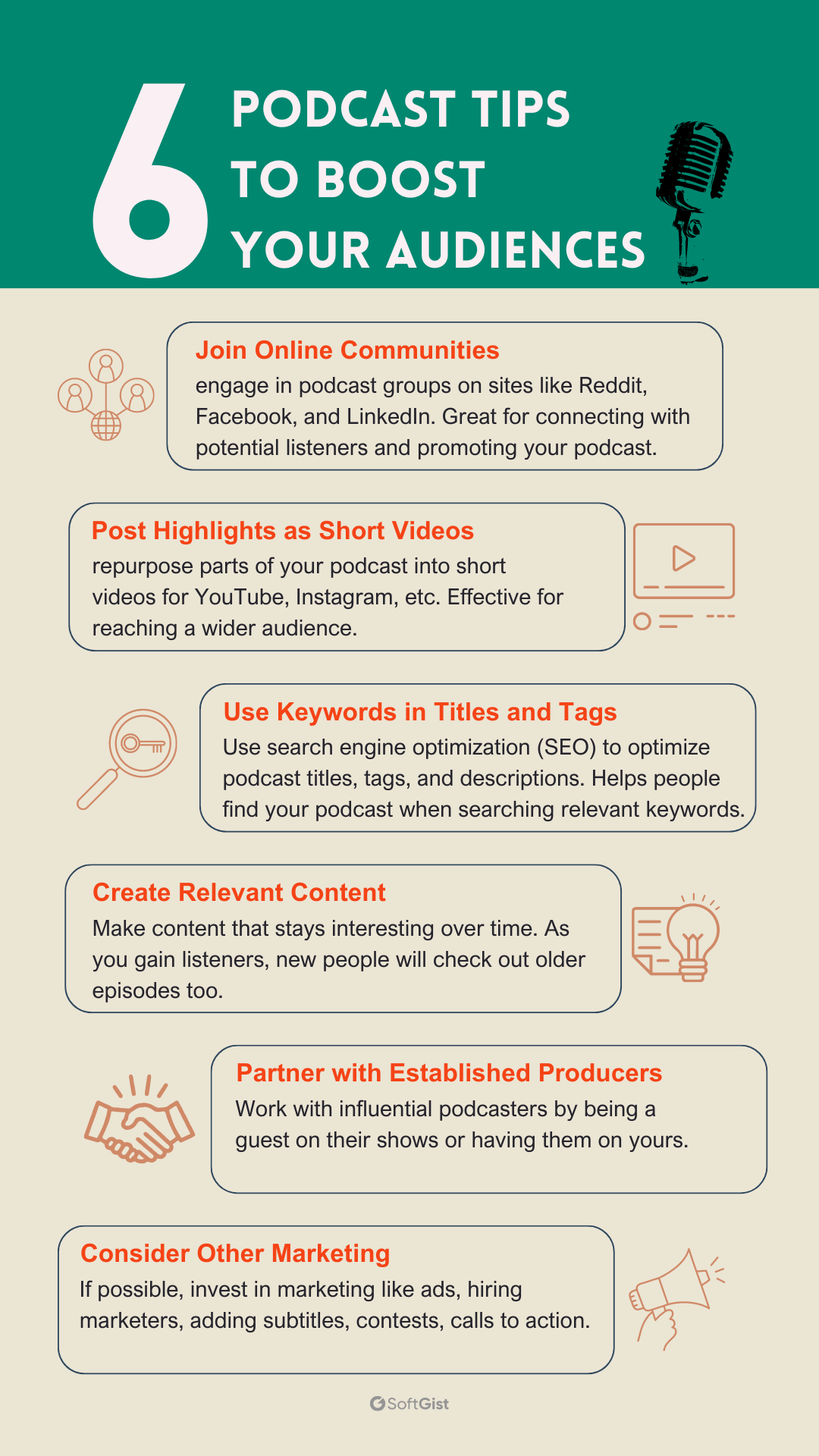
Gaining and maintaining a loyal audience for your podcast is easier said than done. Luckily, however, the following tips can greatly improve your chances of landing listeners faster. Let’s check them out:
Join Podcast Communities Online
Podcast communities are an excellent spot to promote your podcast for free by connecting with those looking for what you’re offering in your podcast. There are tons of communities online, but some of the most popular ones to join are:
- /r/Podcasts (Reddit)
- Podcasts We Listen to (Facebook)
- Apple Podcast Support Community
- Podcasters’ Support Group (Facebook)
- Podcasting Technology Resource Group (LinkedIn)
Cut the Best Bits and Post them in Shorts and Reels
If your podcast has visual content, you can cut some of the highlights and publish them in the form of shorts on Youtube and Instagram. This can be a great way to introduce your content to your target audience!
Focus on Keywords and Optimize Your Podcast Titles and Tags
Search Engine Optimization (SEO) is not only meant for blogging. In fact, you can use SEO tools to make your podcast description, titles, and tags more optimized.
This is ideal for making your podcasts appear in Google Search when potential podcast listeners search for podcasts online using relevant keywords.
Make Sure That Your Content Stands the Test of Time
When you first release podcast episodes, they’ll typically receive very few listeners in the beginning.
However, as you gain some audience, they’ll check out your older content, so make sure that you discuss interesting topics that stay relevant throughout time.
Collaborate with Established Content Producers
Another excellent method to gain some audience is pitching for collaboration with established figures.
This includes inviting them to your show or appearing as a guest/co-host on popular podcasts.
Having great content in your podcast library can massively increase your chances of landing such a deal and also helps in retaining potential listeners.
Consider Other Marketing Solutions and Promotion Methods
Lastly, promotions can be an excellent investment if you don’t mind spending some money, effort, or both to fast-track your podcast’s reputation.
You can achieve this through a variety of methods, such as:
- Advertising your podcast on high-traffic platforms
- Hiring professional marketers to handle your social media presence and advertising
- Transcribing your podcasts and adding subtitles to attract non-native listeners
- Hosting contests and giveaways for your audience
- Leveraging the power of good Call-to-Actions (CTAs) at the end of your podcast
Wrapping Up
This marks the end of today’s guide which walks you through everything you need to know about how to start a podcast with no audience.
If you have the gift of gab and you’re interested in sharing it with the whole world, the previously mentioned tips and steps will put you on the right track.
Remember, many podcasts started with zero listeners and managed to make it big through dedication and hard work.
Also, don’t forget that your family and friends can be great starting audiences, so make sure that you share your podcast with them and ask them to spread the word!
Share This Post
Della Yang
Della Yang is a marketing professional with a passion for the ever-changing digital landscape. She frequently writes tech news and reviews, sharing her knowledge and insights through blogs and various online platforms.
Allow cookies
This website uses cookies to enhance the user experience and for essential analytics purposes. By continuing to use the site, you agree to our use of cookies.

![Pictory: What is It and a Detailed Review [2025]](https://cdn.sanity.io/images/isy356iq/production/3154fe092197e3c8a83bbea0e7740fa136651619-1200x800.jpg?h=200)
![Synthesys: Easily Create Videos and Images from Text [2025]](https://cdn.sanity.io/images/isy356iq/production/4c7ef2320d4ca5bb7ebcc01c0ca99871c50cb09e-1200x800.jpg?h=200)
![Visla: Turn text into Videos Made Simple with AI [2025]](https://cdn.sanity.io/images/isy356iq/production/346bd349fbe304b6ea7c1f785dd00489b9a88b6c-1200x800.jpg?h=200)

![Cutout Pro: Ultimate Review & How to Use [2025]](https://cdn.sanity.io/images/isy356iq/production/9a6e01b979c1f48500bb1d2a5f6dd858aa31def8-1200x800.png?h=200)
![Adobe Podcast AI: What is It and a Detailed Review [2025]](https://cdn.sanity.io/images/isy356iq/production/c3efb171e25415b387a913795d698f9349caef95-1200x800.png?h=200)
![FakeYou: What is It and a Detailed Review [2025]](https://cdn.sanity.io/images/isy356iq/production/262d55065127f4d644c3902f540b10251ce0e3b1-1200x800.jpg?h=200)
![NightCafe: What is It and a Detailed Review [2025]](https://cdn.sanity.io/images/isy356iq/production/f71db9e4276fbbe9452ee555da57be0ddbef1201-1200x800.jpg?h=200)
![Murf AI: What is It and a Detailed Review [2025]](https://cdn.sanity.io/images/isy356iq/production/f755565a163e4f7e16f8f0732f49c61365081fe0-1200x800.jpg?h=200)
![ElevenLabs: What is It and the Ultimate Review [2025]](https://cdn.sanity.io/images/isy356iq/production/07634b4fbac97dae1819c492dcecf7edb957c8c8-1200x800.png?h=200)
![Uberduck AI: What is It and a Detailed Review [2025]](https://cdn.sanity.io/images/isy356iq/production/c9fa6f8e7654b4bfb0e88e4b11e6a2f5fefcba0b-1200x800.jpg?h=200)
![Dezgo: What is It and a Detailed Review [2025]](https://cdn.sanity.io/images/isy356iq/production/f3af70c9850eaf345bcd9c58c1097f19321a27f8-1200x800.jpg?h=200)
![Boomy AI: What is It and a Detailed Review [2023]](https://cdn.sanity.io/images/isy356iq/production/0b5cfa4a51d68376e5baa5e41b3a7b983a8501b8-1200x800.png?h=200)
![Craiyon: What Is It and a Detailed Review [2023]](https://cdn.sanity.io/images/isy356iq/production/d6731e8c37a9655dc922b52c958398191962a927-1200x800.jpg?h=200)